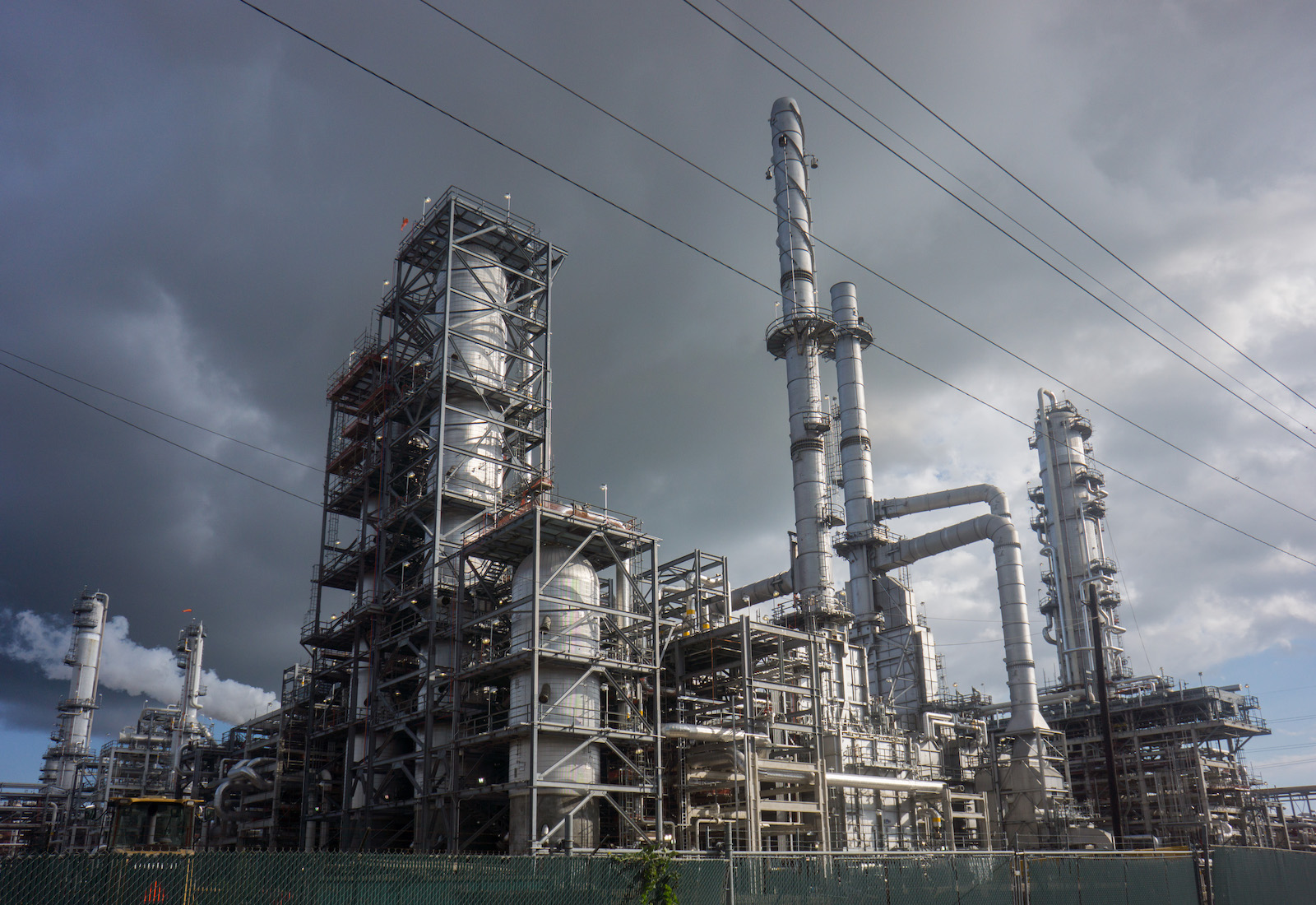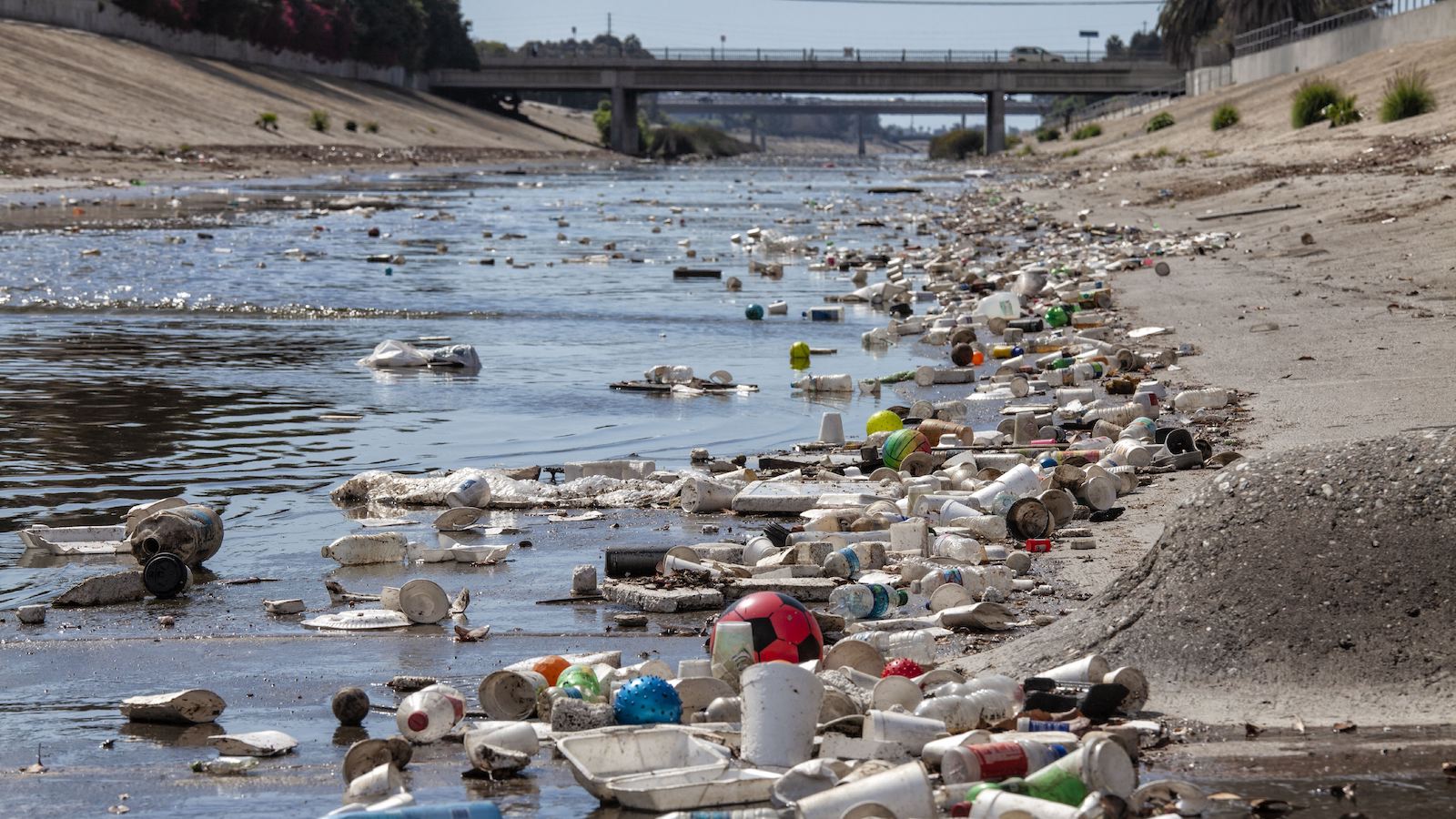Plastic permeates the oceans, clutters landfills, and threatens to create a “near-permanent contamination of the natural environment,” according to researchers. As if that weren’t bad enough, it is also a major contributor to climate change.
A new report from the advocacy group Beyond Plastics says that emissions from the plastic industry could overtake those from coal-fired power plants by the end of this decade. At every step of its life cycle, the report said, plastic causes greenhouse gas emissions that are jeopardizing urgent climate goals and harming marginalized communities.
“Plastic is intimately connected to the climate crisis,” said Judith Enck, a former Environmental Protection Agency regional administrator and the founder of Beyond Plastics, at a press conference unveiling the report. Most people understand how plastic strangles the ocean and can cause health problems, she added, but far fewer have grasped its concerning climate footprint. “Plastic is the new coal,” Enck said.
The report details 10 ways that plastic contributes to global warming, starting with its creation. Plastics are petroleum products, meaning they are made from materials produced by oil and gas wells. Most shale wells in the U.S. are fracked, a process by which liquid is injected deep into the ground to force out methane, ethane, and other gases. Beyond Plastics estimates that leakage at these fracking wellheads contributes an estimated 33 million metric tons of greenhouse gas into the atmosphere annually — an amount that’s roughly equivalent to Denmark’s total emissions in 2019.
Even more greenhouse gas is leaked from pipelines that transport fracked gas to processing facilities. And the facilities themselves — ethane “cracker” plants that heat fracked gas to very high temperatures so it can be turned into plastic — are also “super emitters of greenhouse gases,” Enck said at the press conference for the new report. The U.S.’s 35 cracker facilities and the power plants that help them run release 63.5 million metric tons of greenhouse gases per year — just shy of Greece’s total 2019 output. The petrochemical industry’s plans for expansion could add an additional 38 million metric tons of ghg emissions annually by 2025.
Plastic production doesn’t just help warm the planet; the greenhouse gas emissions are typically accompanied by a slurry of potentially harmful chemicals that can make their way into the surrounding air, water, and soil. The resulting health issues affect nearby neighborhoods, which tend to be disproportionately nonwhite and lower-income. “There are some communities that have facility after facility piled up on them,” said Alex Bomstein, a senior litigation attorney with the Pennsylvania-based nonprofit Clean Air Council.

The Beyond Plastics report went on to describe millions more tons of planet-warming emissions that are associated with plastic after it is produced. According to the report, a staggering 24.5 million metric tons of greenhouse gases are released every year just from the blowing agents — compounds like hydrofluorocarbons — in plastic insulation. Some of these agents can be over 1,400 times more potent in their heat-trapping capacity than CO2 — great news for keeping your house warm, but not so much once they start to accumulate in the atmosphere. Plastic insulation-related hydrofluorocarbons can leach into the air for decades after installation, the report said, and for years after that once the insulation is landfilled.
Plastic disposal also makes for an environmental issue. When plastic isn’t recycled — as is almost always the case — it is often burned. Beyond Plastics estimates that in 2018, the incineration of plastic found in the U.S.’s municipal waste released nearly 13 million metric tons of greenhouse gas into the atmosphere — as much as the emissions associated with almost 800,000 Americans in 2019. More plastic might be burned in so-called “chemical recycling” facilities that, more often than not, turn scrapped plastic back into fossil fuels to be burned.
Even in the ocean — the final resting place for an eye-watering amount of the world’s discarded wrappers, bags, and straws — plastic continues emitting. Although plastic is notoriously hard to break down, it can be degraded by sun and water, releasing potent greenhouse gases such as methane and ethane.
All told, the Beyond Plastics report estimates that the U.S.’s production of plastic in 2020 caused about 210 million metric tons of greenhouse gas emissions — about as much as 116 average-sized U.S. coal-fired power plants. And many experts expect that number to rise, as fossil fuel companies increasingly turn to plastic as a lifeline for their dying industry. In the past few years, Big Oil giants ranging from ExxonMobil and Shell to Saudi Aramco and Formosa have said they plan to increase their plastic production capacity. In 2018, the International Energy Agency predicted that petrochemicals would account for one-third of the growth in oil demand until 2030, and nearly half of it by 2050.
In response to a request for comment, the Plastics Industry Association sent Grist a press release dismissing the Beyond Plastics report, saying that the organization had cherry-picked data “to fit their narrative in order to raise more money for themselves” and that plastic alternatives like glass or metal would have higher environmental impacts. A statement from Joshua Baca, vice president of plastics for another industry group called the American Chemistry Council, said that the Beyond Plastics report failed to recognize plastics’ “many environmental benefits,” such as increasing fuel efficiency by making cars and wind turbines lighter.
Aarthi Ananthanarayanan, senior fellow at the Ocean Conservancy’s Plastics Initiative, said that the report highlighted the need for policymakers to better regulate petrochemical producers. “We have to start considering plastics as part of the fossil fuel industry,” she said, especially in advance of COP26, the climate conference where countries are set to renew their voluntary commitments to reduce their greenhouse gas emissions. “In order for ‘net-zero’ or ‘Paris alignment’ to be meaningful, they have to include plastic production.”
The Clean Air Council’s Bomstein agreed, stressing the importance of holding the fossil fuel and petrochemical industries accountable for their impact on vulnerable communities. “There’s no right to kill people in order to make money,” he said, “but that’s what these industries are doing. It’s time for all of us — and especially policymakers — to say it’s no longer acceptable.”
This story has been updated to include the American Chemistry Council’s response to Grist’s request for comment.
This story has been updated to reflect Aarthi Ananthanarayanan’s title as senior fellow at the Ocean Conservancy’s Plastics Initiative.



